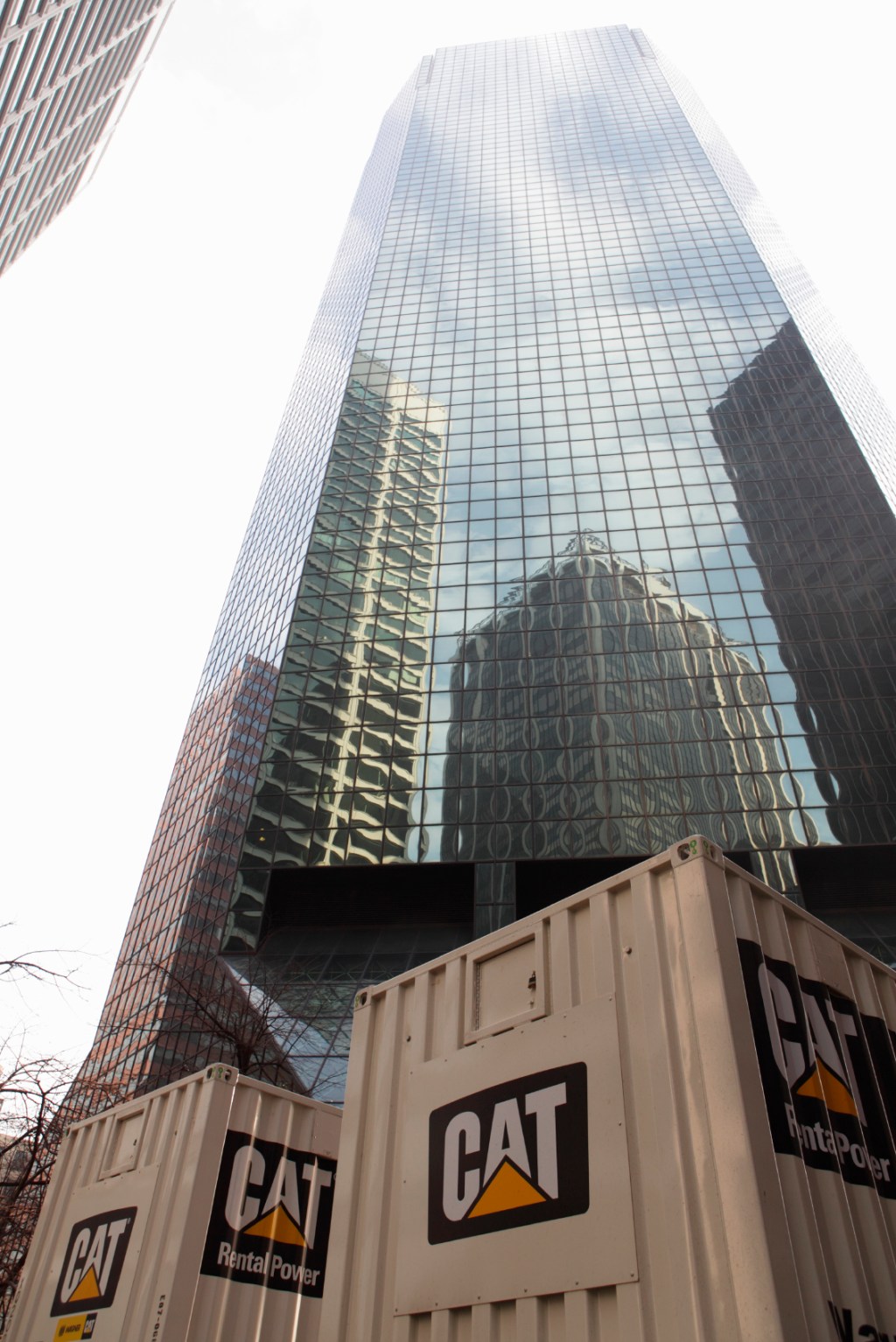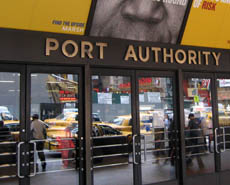In the early 1930s, the title of world’s tallest building was claimed three times in rapid succession – by the Bank of Manhattan, the Chrysler Building and the Empire State Building, all in New York City. Since then, the designation has changed hands many times, with Burj Khalifa in Dubai, United Arab Emirates, the current champion at 2,717 feet, followed by the 2,073-foot-tall Shanghai Tower and the Makkah Royal Clock Tower in Mecca, Saudi Arabia, which tops out at 1,971 feet. The tallest building from 2004 to 2010 – Taipei 101 in Taiwan, which Burj Khalifa usurped – now occupies the No. 10 spot. The Willis (formerly Sears) Tower in Chicago reigned for 24 years until 1998 and now sits at No. 22. And Bank of Manhattan, now known as 40 Wall Street, doesn’t even crack New York’s top 20. Although construction declined in 2020, the year still saw 106 completions of buildings 656 feet and taller, including the 1,500-foot-plus Central Park Tower and 1,400-footer One Vanderbilt, both in New York. Industry observers predict that up to 150 buildings 656 feet or taller will be completed in 2021, with between 14 and 30 being at least 984 feet tall. Will it stop? Won’t physics impose limits to the upward trend? Structural engineer William Baker doesn’t think so. The buttressed core design used for Burj Khalifa could allow structures to “conceivably go higher than the highest mountain, as long as you kept spreading a wider and wider base.” In fact, he says, “We could easily do a kilometer. We could easily do a mile. We could do at least a mile and probably quite a bit more.” The next generation of behemoths includes the partially constructed Jeddah Tower in Saudi Arabia, designed to reach 3,281...
Improving Comfort
3 Effective Strategies
Your tenant in the eastern wing is chronically cold. You’re fighting an uphill battle for safety as your tenant’s employees bring personal heaters into the space. In the western wing, however, your tenant’s employees can’t get cool enough. They complain of high energy bills while swearing the humidity will lead to mold problems. Uncomfortable tenants are more than a headache. They are a threat to your bottom line. Thermal comfort can impact your tenants’ desire to renew their leases. Additionally, a commercial property with low thermal comfort may indicate inefficiencies in its climate controls or building envelope. High turnover and an inefficient building will adversely affect your bottom line. Thermal Comfort + Your Bottom Line The American Society of Heating, Refrigerating and Air-Conditioning Engineers defines thermal comfort as the condition of mind that expresses satisfaction with the thermal environment. It is subjectively assessed by using the Comfort Scale or Thermal Index, both of which evaluate temperature, humidity, air velocity, and radiant temperature. As comfort is subjective, a commercial building’s thermal comfort ranking will vary from person to person. Health and Safety Executive recognizes an international standard which suggests that a building has “reasonable comfort” when at least 80 percent of its occupants are thermally comfortable. Improving Thermal Comfort in Commercial Properties There are three ways to notably improve tenant comfort and protect your investment: 1. Identify and Fix Leaks Address leaks in the building envelope. Contact a contractor to identify areas where your heating and cooling efforts are defeated by oversights in construction or maintenance. Resealing windows and adding weather stripping to doors, for example, are two quick fixes for drafts. Leakage significantly decreases the energetic efficiency of an HVAC system. As a result, the HVAC system may be working overtime to regulate indoor conditions. Have your units...
Office Sector Update
From Yardi Matrix
The U.S. office property market stayed on the upswing in July, with asking rates increasing 1.1% year-over-year. Office-using jobs increased 1.7% in the same period, driven by the computer design services portion of the professional business services segment, according to a new national report from Yardi® Matrix. Additional good news includes a robust late-cycle construction pipeline comprising 174 million square feet of space. That will represent a 2.8% increase in inventory when delivered. Manhattan, N.Y., with 24.2 million square feet, and Boston and San Francisco, with 11.5 million square feet and 10.9 million square feet, respectively, are the leaders in that category. Office space deliveries in the first seven months of 2019 totaled 33.8 million square feet, broken down by central business district (6.5 million square feet), urban (14 million square feet) and suburban areas (13.3 million square feet). Office sales valued at $46.5 billion took place through July, only slightly off last year’s pace. Roiling capital markets haven’t affected demand for office space so far. “Economic growth has been running at an annualized rate of about 2.5%, and fundamentals such as employment and consumer spending remain healthy, so a recession does not appear to be on the immediate horizon,” the report says. Find out what else is happening in the dynamic U.S. office market in the most recent Yardi Matrix national office...
Tech Culture Shift
At Lowe With Yardi
Los Angeles-based Lowe is a leading national real estate investment, development and management firm in the commercial, hospitality and residential property investment sectors. In its 46 years the company has developed, acquired or managed real estate assets across the U.S. valued at more than $28 billion. Lowe manages commercial properties for institutional clients and joint venture partners. Challenges in managing portfolio growth and demands from clients for efficient service and profitability prompted the company to adopt Yardi Voyager in March 2013 The Balance Sheet asked Cindy Pearl, Lowe’s vice president/property operations controller, for a status report. Q: How has Voyager impacted your business? Pearl: I’ll offer just a few examples of how Voyager saves time on transactional items: Cutting an entire step by reversing charges and having the zero-cash receipt automatically apply itself. Saving a day of work for my cash receipts person by doing automatic application of pre-paids. Automatically sending A/R reports to our property management teams three times a month. The ability to enter multiple charges to one tenant on one screen is brilliant. We don’t have to apply pre-paid rents to the next month because they’re auto-applied. And we don’t have to do a zero-receipt batch for reversed charges. I love the flexibility, the analytics and how far you can drill down. Q: What aspect of Voyager stands out the most in your mind? Pearl: Its value to us goes far beyond numbers. Its effects aren’t measured just in time savings but in improved work attitudes and morale that come from eliminating multiple repetitive tasks. Voyager has produced a cultural shift by empowering our property management teams to collect receivables information and act on it on their own without help from corporate Q: You’ve been with Lowe more than 30 years. What would you like people to know about the company? Pearl: Lowe has a strong, values-based culture that encourages people—like me—to build our careers here. Beyond that, the thing about Lowe that has always amazed me is that we’ve survived all the business down cycles. We always come out of them. I think that says something about our tenacity, our management philosophy and our adaptability. Q: Back to Voyager—what else does it do for you? Pearl: It’s an amazing amount of information that people can turn into financial sense. I can run a transaction register for one tenant on one rent charge, or a tenancy report that shows everybody in a building with a renewal clause, all in one place. We can give appraisers, lenders or brokers a snapshot rent roll, custom rent roll, abstracts and tenancy schedules without having to pull out 140-page leases. We’re no longer spending hours figuring out a renewal. It’s like window-shopping: you can decide what you want, click a few buttons and get the report. Sometimes you almost don’t have to think for yourself anymore. It’s almost like breathing; it just happens. I almost can’t remember a time without Voyager. Learn more about Lowe....
Accounting Standards
Yardi Meets New Requirements
Functionality in Yardi Voyager Commercial property management and accounting platform complies with upcoming new accounting standards for commercial property management set by the Financial Accounting Standards Board (FASB) and the International Accounting Standards Board (IASB). Yardi Voyager supports FASB-required operating and finance leases and IASB-mandated finance leases. “Yardi fully understands the requirements set by FASB and IASB and is helping our clients adopt the mandatory new standards,” said Terri Dowen, senior vice president of sales for Yardi. The FASB/IASB standards are optional now, but starting in 2019, FASB and IASB will require recognition of all lease transactions on a lessee’s balance sheet. Previously only finance leases (purchase agreements) appeared as liabilities; property management companies were not required to disclose long-term liabilities associated with a lessee’s leasing activities. To account for these liabilities, lessees will need to determine the net present value (NPV) of all future leasing obligations as of a certain transition date and given a certain discount rate. The liability on the balance sheet will equal the NPV of the future lease payments. The offsetting right-of-use asset will equal the NPV of future lease payments, adjusted for initial direct costs and carryforward. New features in Yardi Voyager help tenants meet the new standards by allowing calculation of the net present value of lease payments using a discount rate. They also recognize a liability equal to the calculated present value and an asset equal to the present value plus adjustments. Other new features include amortization of the lease asset value and lease liability over the life of the lease, generation of all required general ledger accounting entries, and a full reporting suite including prior year comparisons and compliance reports. FASB is an independent, not-for-profit organization that establishes financial accounting and reporting standards for public,...
Skyreaching Heights
Petronas Towers’ Yardi connection
Here’s a trivia question for you: Without cheating and looking at your smartphone, can you name the top ten tallest buildings in the world? And for bonus points: do you know that one of the planet’s highest skyscrapers has a Yardi connection? Until not too long ago, the world’s tallest skyscraper, was the Petronas Towers in Malaysia. For six years, between 1998 and 2004, Petronas’ sky-scraping spires were the highest on record. Since then, a number of buildings have surpassed it. Here’s the top ten list of tallest buildings as recorded by Wikipedia: 1 Burj Khalifa Dubai UAE 828 m 2,717 ft 2010 2 Makkah Royal Clock Tower Hotel Mecca Saudi Arabia 601 m 1,971 ft 2012 3 One World Trade Center New York City USA 541 m 1,776 ft 2013 4 Taipei 101 Taipei Taiwan 509 m 1,670 ft 2004 5 Shanghai World Financial Center Shanghai China 492 m 1,614 ft 2008 6 International Commerce Centre Hong Kong Hong Kong 484 m 1,588 ft 2010 7 Petronas Tower 1 Kuala Lumpur Malaysia 452 m 1,483 ft 1998 7 Petronas Tower 2 Kuala Lumpur Malaysia 452 m 1,483 ft 1998 9 Zifeng Tower Nanjing China 450 m 1,476 ft 2010 10 Willis Tower (Formerly Sears Tower) Chicago USA 442 m 1,450 ft 1973 Its one-time status as the tallest is one of many interesting facts about the Petronas Towers. Here are a few more from PBS.org: The Petronas Towers are constructed of 36,910 tons of steel Even if you have never visited Malaysia, you may have seen the towers featured in the film Entrapment, which came out in 1999, just one year after construction was completed A high-speed elevator takes you from the basement to the top of either tower – 88 stories – in just 90 seconds A full round of window washing of the 16,000 windows on each tower...
Against the Odds
Lessons from Hurricane Sandy
During Hurricane Sandy, a 14-foot storm surge from the Hudson River triggered flooding that took offline 29.8 million out of 85.2 million square feet in one of the nation’s biggest office submarkets, according to a Cushman & Wakefield Inc. survey. While the majority of that space was expected to be back online at the beginning of this year, the situation raised plenty of new questions for owners and managers. For one thing, owners and tenants alike often found themselves in a bind as the disruption forced tenants into an extended absence from their properties. In some cases the two sides strove to accommodate one another; in others, the question of owed rent led to friction. While leases should clearly spell out the conditions under which the tenant must still pay rent, there were cases where condominium associations raised the specter of lawsuits, alleging negligence on the landlord’s part for failing to protect their units from damage. Meanwhile, property owners faced the issue of how well they could withstand the temporary loss of rental revenue and the cost of repairs. Well-financed institutional owners were in a better position than investors of more modest means, with the potential prospect of some lenders being unwilling to forgo loan payments for an extended period. Sandy also challenged emergency preparation and response to a degree unprecedented for any natural disaster in the metropolitan New York City area. Much of the preparation involved taking steps that had been established well in advance. For years, most sophisticated owners and property managers had practiced for an event during tabletop exercises. Cushman & Wakefield set up a command center in each of the major markets in the storm’s path 24 hours before its arrival. In the immediate aftermath of the storm, construction trades...
Cost Controls
Operating commercial buildings
With the cost of operating commercial buildings growing ever harder to control, owners and managers will likely start taking a new look at contracts this year for the first time in quite awhile. While trends in operating costs will probably continue to vary widely by both location and property type, they nonetheless will see an uptick in many markets beyond that recorded during the past several years. From 2010 to 2011, median operating costs for downtown office buildings ranged from a 4.5 percent increase in the Central, Rocky Mountain and Northwest regions to an 11.2 percent decline on the West Coast. Suburban office properties have showed a similar variation, as operating expenses dropped 3.3 percent in the Southeast and rose 9.6 percent on the West Coast. Nationwide, the changes for suburban office properties added up to a 1 percent year-over-year increase from 2010 to 2011. That was comparable to the 1 percent nationwide increase for shopping centers. In the past few years, property owners and managers have already taken steps to reduce or control costs. For instance, they have largely reduced their energy outlays or at least made sure that costs increased more slowly than utility rates. For privately owned buildings, median utilities costs dropped from $2.38 per square foot to $2.32 per square foot between 2011 and 2010—a 2.5 percent decline, according to BOMA/Kingsley Associates research. The pattern of decreases or modest increases in utility costs is widely credited to the success of owners and managers with cost-cutting strategies that have become standard in recent years: low-usage lighting fixtures, sophisticated control panels that fine-tune power distribution and so forth. In order to keep a lid on costs—or to reach the next level of cost reductions—owners may face a choice of investing in expensive retrofits or accepting cost increases. According to the most recent IREM research, for instance, energy costs for downtown office buildings increased about 1.4 percent from 2010 to 2011 nationwide. But while that suggests overall stability, the figure masks regional variations. During the past several years, downtown office buildings in the Central, Rocky Mountain and Northwest regions have demonstrated significant increases, including a 9.9 percent jump from 2010 to 2011, according to the Institute for Real Estate Management. Meanwhile, West Coast properties trimmed those costs 15.7 percent. The suburbs told a different story: Except for the West Coast, properties all recorded a decline in energy costs during the same period. And in the retail sector, which has a somewhat different allocation of costs, property managers have likewise succeeded in keeping energy costs and other prices relatively stable. IREM’s most recent report shows that utilities represented 8.7 percent of operating costs, a percentage that has remained largely unchanged in recent years. Costs are inching up in other categories of operations, as well. Owners and managers are watching tenant improvements, for instance. Between 2010 and 2011, costs for building out office space in privately owned properties edged up 10 percent, to $2.30 per square foot, according to the annual BOMA/Kingsley survey. New tenant leases and a desire by existing tenants to improve their space may be driving the increases, BOMA speculates. On the plus side, taxes continue to offer fruitful ground for cost savings. According to IREM’s most recent research, the tax bill on suburban office properties declined 2.7 percent from 2010 to 2011, to an average of $2.14 per rentable square foot. That followed a 4.3 percent drop the previous year. Taxes on downtown office properties also slipped, declining 2.2 percent to $2.62 per square foot during the same period. This trend may in fact be the result of successful appeals of tax assessments—and thus it remains to be seen whether it will continue in the new year. Paul Rosta is senior editor for Commercial Property Executive. For more on property management cost trends, including charts detailing how the dollars are being allocated, see “Holding the Line”...
Yardi Government Services...
Supporting NY/NJ Port Authority
Have you ever thought about how planes, trains, cargo ships and automobiles are inextricably linked with the world of real estate? There’s no better illustration of this reality then the Port Authority of New York and New Jersey, the largest port complex on the East Coast, which recently chose Yardi Voyager for Government to handle tenant management, lease administration, property management, and much more. The most important work of a port authority is to keep regional trade and transportation systems moving safely and smoothly. But roads, rails, seaports and airspace all require extensive supporting infrastructure and real estate, and that’s where Yardi Systems can be of great help. The Port Authority of New York and New Jersey will use Yardi’s commercial property management software solution for all of its real estate business, which ranges from office leases in One World Trade Center (Freedom Tower) to concession and fixed base operation leases at the nation’s three busiest airports (John F. Kennedy International Airport, LaGuardia Airport, Newark Liberty International Airport) to collecting tolls on the New Jersey Turnpike. More than 485 leases, 65M SF of buildings and 15,000 acres of property will be managed using Yardi Voyager. “Yardi can handle all of it, with our commercial off the shelf (COTS) system,” said Spencer Stewart, National Account Executive, Yardi Government Services, of the advantages of choosing Yardi Voyager. “We’re going to personalize it for you. We have all the tools to match your workflow and your terminology without the need to customize or modify.” Because governments are so unique, Yardi has created vertically integrated government services group. Yardi’s Government Services arm is ideally positioned to meet the needs of government clients, which frequently have diverse property management needs. The department includes a dedicated implementation staff for government...









